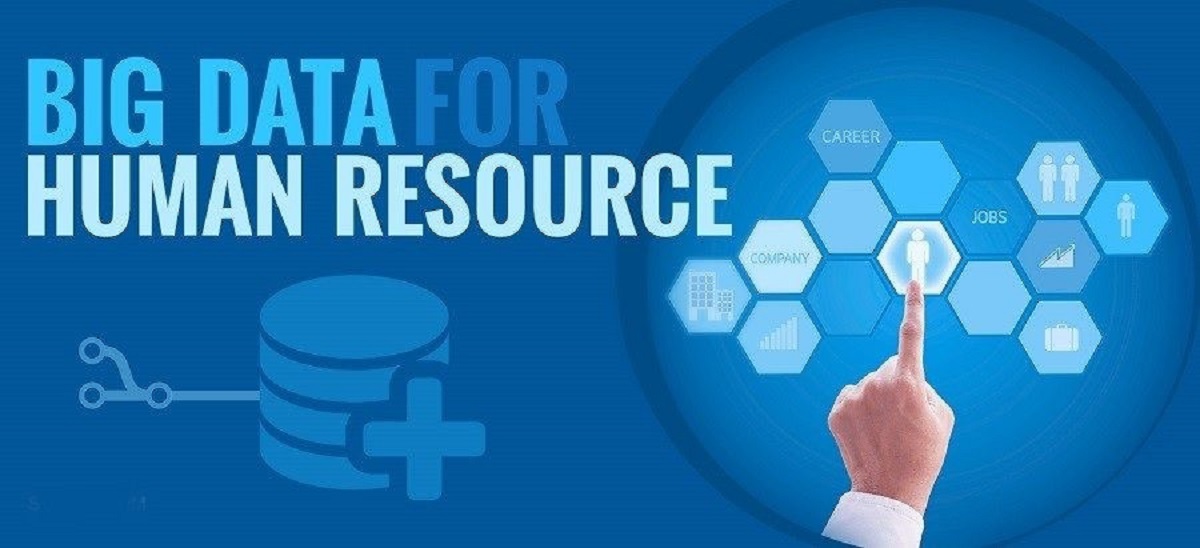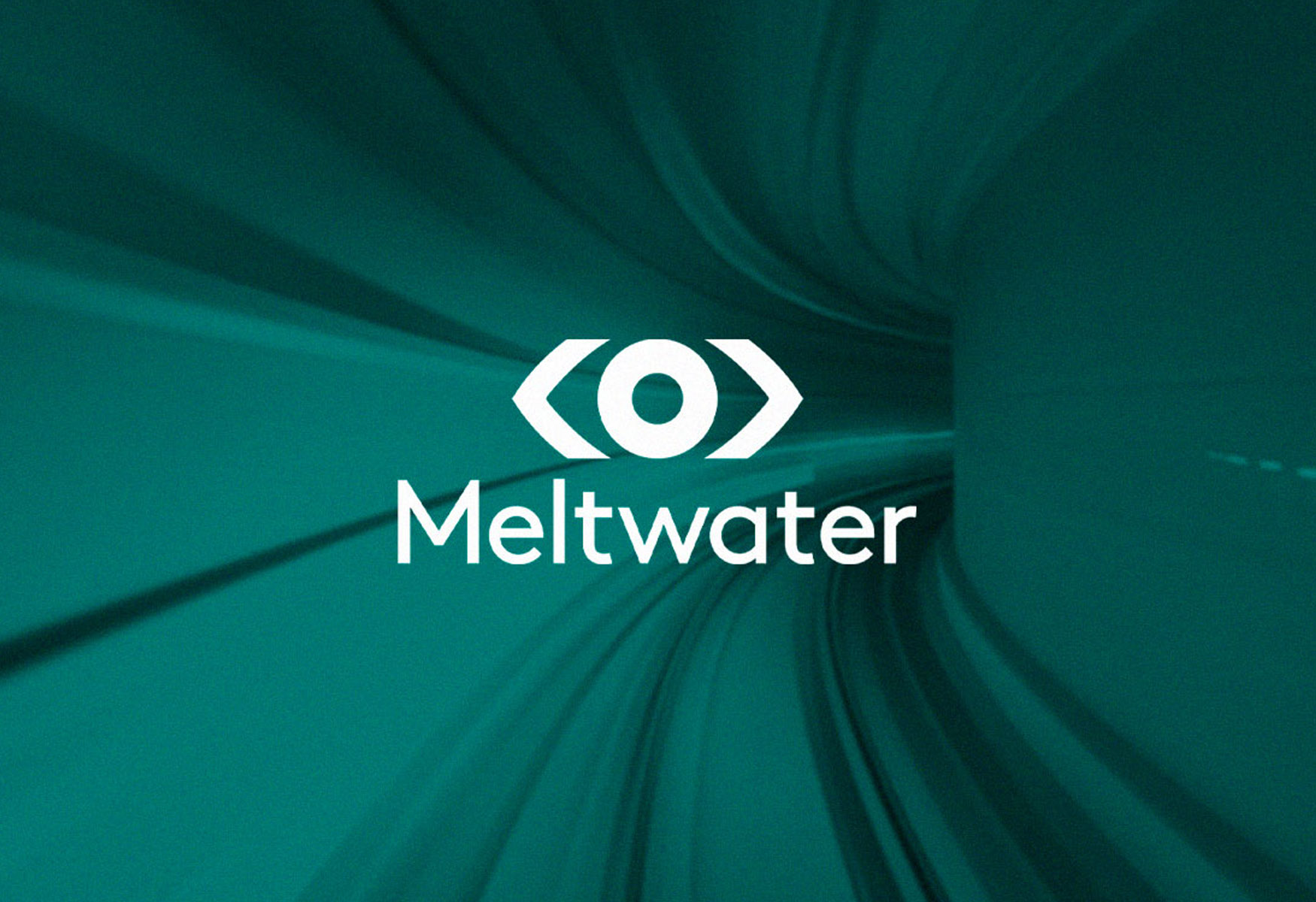Introduction
Welcome to the world of Big Data in Human Resources (HR). In today’s digital age, data is being generated at an unprecedented rate, and this abundance of information has revolutionized the way organizations operate. HR departments are no exception, as they have turned to Big Data to gain valuable insights into their workforce and make informed decisions.
But what exactly is Big Data? Simply put, it refers to the enormous volume, velocity, and variety of data that organizations accumulate on a daily basis. Unlike traditional data sources, Big Data encompasses a diverse range of information types, including but not limited to employee records, performance metrics, survey results, social media data, and external market data. The sheer size and complexity of this data require advanced analytics tools and techniques to extract meaningful patterns and trends.
The adoption of Big Data in HR brings significant benefits to organizations. By harnessing the power of analytics, HR professionals can gain deep insights into various aspects of their workforce, including employee performance, engagement, retention, and talent acquisition. These insights enable HR departments to make data-driven decisions that positively impact the overall success of the organization.
In this article, we will explore the importance of Big Data in HR, the types of data commonly encountered, the challenges faced in handling Big Data, the benefits reaped by organizations, the role of Big Data analytics in HR, relevant case studies, ethical considerations, and future trends.
As we delve further into the world of Big Data in HR, it is crucial to remember that although data gives us immense potential, it must be used responsibly. Organizations must navigate the ethical considerations surrounding data privacy, security, and bias to ensure that their use of Big Data is fair, transparent, and in compliance with regulatory standards. Additionally, monitoring future trends in Big Data will allow HR professionals to stay ahead of the curve and leverage emerging technologies to transform the way they manage their workforce.
Now, let us embark on this journey to discover the transformative power of Big Data in HR and its implications for the future of work.
Definition of Big Data
Before we dive into the world of Big Data in HR, let’s start by understanding what exactly Big Data means. Big Data is a term used to describe extremely large and complex sets of data that cannot be easily managed, processed, or analyzed using traditional data processing methods.
Big Data is characterized by the three Vs: volume, velocity, and variety.
Volume: Big Data refers to a massive amount of data that is generated on a daily basis. This can include structured data, such as employee records and performance metrics, as well as unstructured data, such as social media posts, emails, and documents. The volume of data generated is too vast for traditional data processing systems to handle.
Velocity: Big Data is generated at an incredibly fast pace. For example, social media posts, online transactions, and sensor data are constantly being produced in real-time. The ability to process and analyze this data in real-time is crucial for organizations to gain timely insights and make informed decisions.
Variety: Big Data is diverse and encompasses various types of data. It includes structured data, such as employee demographics and performance ratings, as well as unstructured data, such as text, images, and videos. The variety of data sources requires advanced analytics techniques to extract meaningful insights.
These three characteristics of Big Data pose significant challenges in terms of storage, processing power, and analysis. Traditional data processing methods and tools are insufficient to handle this magnitude and complexity of data. Instead, organizations rely on modern technologies like cloud computing, machine learning, and artificial intelligence to effectively manage and analyze Big Data.
In the context of HR, Big Data refers to the large volumes and varied types of data that are generated by and about employees. This includes data related to recruitment, performance management, employee engagement, training and development, compensation and benefits, and more. By analyzing this data, HR professionals can gain valuable insights that help them make informed decisions and drive organizational success.
Now that we have a better understanding of what Big Data is, let’s explore its importance and impact in the field of HR.
Importance of Big Data in HR
The emergence of Big Data has brought about a profound transformation in the field of Human Resources (HR). As organizations strive to stay competitive in today’s dynamic business landscape, they are realizing the importance of leveraging data-driven insights to make informed decisions about their workforce. Here are some key reasons why Big Data is of utmost importance in HR:
1. Data-Driven Decision Making: Big Data provides HR professionals with a wealth of information about their workforce, enabling them to make data-driven decisions. By analyzing data related to employee performance, engagement levels, turnover rates, and compensation, HR teams can identify patterns and trends that help them optimize their talent management strategies.
2. Improved Recruitment and Talent Acquisition: With the help of Big Data analytics, HR professionals can gain insights into the characteristics and behaviors of successful candidates. By analyzing data from various sources, such as resumes, social media profiles, and performance assessments, HR teams can identify the attributes and skills that are correlated with high-performing employees. This data-driven approach enhances the recruitment and selection process, leading to better talent acquisition and improved organizational performance.
3. Enhanced Employee Engagement: Big Data allows organizations to measure and monitor employee engagement levels. By analyzing data from surveys, performance reviews, and social media platforms, HR teams can identify factors that contribute to higher employee engagement and take proactive measures to address any issues. This helps create a positive work environment, improve employee satisfaction, and ultimately drive productivity and retention.
4. Personalized Learning and Development: Big Data analytics can help organizations identify skill gaps and individual learning needs. By analyzing employee performance data, training and development records, and career aspirations, HR teams can personalize learning and development programs to meet the specific needs of each employee. This not only enhances employee satisfaction and engagement but also ensures that the organization has a skilled and competent workforce.
5. Predictive Analytics for Workforce Planning: Big Data enables HR professionals to leverage predictive analytics to forecast future workforce needs. By analyzing historical data, market trends, and employee turnover rates, organizations can anticipate future demand for talent, identify potential gaps, and develop proactive strategies to address them. This helps in effective workforce planning, reducing recruitment costs and ensuring the availability of the right skills at the right time.
In summary, Big Data is crucial in HR as it allows organizations to make data-driven decisions, enhance recruitment and talent acquisition, improve employee engagement, personalize learning and development, and facilitate predictive workforce planning. By harnessing the power of Big Data, HR professionals can gain a competitive edge and drive organizational success.
Types of Data in HR
In the field of Human Resources (HR), a wide range of data is generated and collected. This diverse set of data provides valuable insights into various aspects of the workforce, enabling HR professionals to make informed decisions. Here are some key types of data commonly encountered in HR:
1. Employee Data: This includes personal information about employees, such as demographics, contact details, education, and work experience. Employee data is crucial for managing employee records, payroll processing, and ensuring compliance with legal and regulatory requirements.
2. Performance Data: Performance data consists of information related to employee performance, productivity, and achievements. This includes performance ratings, goals and targets, performance improvement plans, and feedback from supervisors and peers. Analyzing performance data helps HR teams identify high-performing employees, provide targeted feedback and coaching, and recognize areas for improvement.
3. Engagement Data: Engagement data measures the level of employee engagement and satisfaction within the organization. This can be gathered through employee surveys, feedback sessions, and social media platforms. Analyzing engagement data helps identify factors that impact employee engagement, such as leadership effectiveness, work-life balance, and career growth opportunities.
4. Recruitment Data: Recruitment data encompasses information related to the recruitment and selection process. This includes job applications, resumes, interviews, assessments, and background checks. Analyzing recruitment data helps identify the effectiveness of recruitment sources, assess the quality of candidates, and optimize the recruitment process.
5. Training and Development Data: This type of data includes information about employee training programs, workshops, certifications, and development plans. Analyzing training and development data helps HR teams understand the effectiveness of learning initiatives, identify skill gaps, and tailor development programs to address specific needs.
6. Compensation and Benefits Data: Compensation and benefits data covers information related to employee salaries, bonuses, allowances, and other monetary rewards. It also includes details about benefits such as healthcare, retirement plans, and vacation policies. Analyzing compensation and benefits data helps ensure fair and competitive compensation practices and provides insights into the impact of rewards on employee motivation and retention.
7. Exit and Turnover Data: Exit and turnover data includes information about employees who leave the organization voluntarily or involuntarily. This data helps HR teams identify patterns and reasons for employee turnover, assess the effectiveness of retention strategies, and take corrective actions to improve employee retention.
By collecting and analyzing these various types of data, HR professionals can gain a comprehensive understanding of their workforce and make data-driven decisions regarding talent management, employee engagement, performance improvement, recruitment strategies, training and development initiatives, and compensation practices.
Challenges in Handling Big Data in HR
While Big Data offers immense potential in the field of Human Resources (HR), its effective utilization comes with its own set of challenges. Here are some key challenges that organizations face when handling Big Data in HR:
1. Data Quality and Accuracy: The sheer volume and variety of data in HR make it challenging to ensure data quality and accuracy. HR professionals need to deal with data from various sources, such as employee records, performance metrics, surveys, and social media. Inaccurate or incomplete data can lead to flawed analysis and unreliable insights. Organizations must invest in data validation and cleansing processes to maintain data integrity.
2. Data Privacy and Security: As HR deals with sensitive employee information, ensuring data privacy and security is of utmost importance. Big Data in HR holds personal and confidential data, such as employee demographics, performance records, and compensation details. Organizations must have robust data protection measures in place to prevent unauthorized access, data breaches, and comply with relevant data protection regulations.
3. Technology and Infrastructure: Handling and analyzing Big Data requires advanced technology and robust infrastructure. Organizations need to invest in appropriate hardware, software, and data management platforms to store, process, and analyze large volumes of data efficiently. Scaling infrastructure to accommodate increasing data volumes and ensuring compatibility between different systems can be a complex task.
4. Data Integration and Governance: Integrating data from various systems and sources can be a significant challenge. HR data may reside in different databases and applications, making it difficult to create a unified view. Organizations need to establish data governance frameworks to standardize data formats, definitions, and access controls, ensuring consistency and accuracy across different HR systems.
5. Analytical Skills and Talent: Making sense of Big Data requires skilled professionals who possess advanced analytical skills. The shortage of data scientists and analysts with HR domain expertise is a common challenge faced by organizations. HR teams must have access to individuals who can extract meaningful insights from the data and translate them into actionable recommendations for HR strategies and decision-making.
6. Legal and Ethical Considerations: Utilizing Big Data in HR raises important ethical and legal considerations. Organizations must navigate privacy laws, data ownership, and potential biases in data analysis. They need to ensure that their data collection and usage practices comply with legal requirements and ethical standards, respecting employee privacy and protecting against discrimination and bias.
7. Data Overload and Analysis Paralysis: The abundance of Big Data can be overwhelming, leading to information overload and analysis paralysis. HR professionals may struggle to identify the most critical insights and trends amidst the sea of data. Employing effective data visualization techniques and analytics tools can help HR teams simplify and present data in a meaningful way, enabling better decision-making.
In summary, organizations face various challenges when handling Big Data in HR, including data quality, privacy, technology infrastructure, integration, analytical skills, legal considerations, and avoiding information overload. Overcoming these challenges requires a combination of technological investments, skills development, data governance, and ethical considerations to unlock the true potential of Big Data in HR.
Benefits of Big Data in HR
The adoption of Big Data in Human Resources (HR) brings a multitude of benefits, revolutionizing the way organizations manage their workforce. By leveraging the power of data analytics, HR professionals can gain valuable insights and make informed decisions to drive organizational success. Here are some key benefits of utilizing Big Data in HR:
1. Data-Driven Decision Making: Big Data enables HR professionals to make data-driven decisions. By analyzing vast amounts of data related to employee performance, engagement, turnover, and recruitment, HR teams can derive actionable insights. These insights guide strategic decision-making, resulting in improved talent management, enhanced employee performance, and better alignment of HR initiatives with organizational goals.
2. Enhanced Recruitment and Selection: Big Data analytics in HR improves the recruitment and selection process. By analyzing a wide range of candidate data, such as resumes, social media profiles, and assessments, organizations can identify the most suitable candidates for specific roles. This results in better hiring decisions, reduced time-to-fill, and improved alignment between candidate skills and job requirements.
3. Improved Employee Engagement: Big Data allows organizations to measure and monitor employee engagement levels. By analyzing data from engagement surveys, performance metrics, and employee feedback, HR teams can identify factors that contribute to higher engagement and take targeted measures to enhance employee satisfaction. This leads to increased productivity, higher retention rates, and a positive work culture.
4. Personalized Learning and Development: Big Data analytics enables personalized learning and development programs. By analyzing employee performance, skills, and career goals, HR teams can provide tailored training and development opportunities to employees. This ensures that learning initiatives are aligned with individual needs, leading to improved employee performance, higher engagement, and increased retention.
5. Predictive Analytics for Workforce Planning: Big Data analytics helps organizations leverage predictive analytics for workforce planning. By analyzing historical data, market trends, and employee turnover patterns, HR professionals can forecast future workforce needs. This enables proactive hiring, succession planning, and talent management strategies, ensuring the availability of the right skills at the right time.
6. Identification of Performance Drivers: Big Data analytics helps organizations identify the key drivers of employee performance. By analyzing data related to performance metrics, employee feedback, and rewards, HR teams can pinpoint the factors that contribute to high performance. This allows organizations to optimize performance management practices, provide targeted coaching and development, and foster a culture of excellence.
7. Enhanced Diversity and Inclusion Efforts: Big Data analytics can facilitate organizations’ efforts towards diversity and inclusion. By analyzing data related to demographics, representation, and employee feedback, HR teams can identify areas of improvement and take proactive steps to create a more inclusive workplace. This leads to improved employee satisfaction, innovation, and better business outcomes.
In summary, the benefits of utilizing Big Data in HR are significant. By enabling data-driven decision-making, improving recruitment and selection, enhancing employee engagement and development, enabling predictive analytics for workforce planning, identifying performance drivers, and enhancing diversity and inclusion efforts, organizations can gain a competitive edge, drive employee success, and foster a positive work environment.
Big Data Analytics in HR
In the field of Human Resources (HR), Big Data analytics has emerged as a powerful tool for gaining valuable insights into the workforce and driving data-driven decision-making. Big Data analytics refers to the process of analyzing vast amounts of data using advanced analytics techniques to uncover patterns, trends, and correlations that can help HR professionals make informed decisions. Here are some key aspects of Big Data analytics in HR:
1. Data Collection and Integration: Big Data analytics starts with the collection and integration of various data sources within HR. This includes employee records, performance data, engagement surveys, social media data, and external market data. Integrating these diverse data sources allows HR professionals to have a holistic view of the workforce and enables in-depth analysis.
2. Data Mining and Statistical Analysis: Big Data analytics involves data mining and statistical analysis techniques to identify meaningful patterns and insights. By applying statistical models, algorithms, and machine learning techniques, HR professionals can uncover hidden relationships and correlations in the data. This enables them to gain insights into employee performance, engagement, turnover, and other critical HR metrics.
3. Predictive Analytics: Big Data analytics enables predictive modeling in HR. By analyzing historical data and applying predictive algorithms, HR professionals can forecast future trends and outcomes. This includes predicting employee attrition, identifying high-potential employees, and forecasting workforce needs. Predictive analytics allows HR to be proactive in their decision-making, enabling effective workforce planning and talent management strategies.
4. Text and Sentiment Analysis: Big Data analytics enables text and sentiment analysis in HR. By analyzing employee feedback, social media data, and performance reviews, HR professionals can understand employee sentiments, identify areas of opportunity, and address any issues that may impact employee engagement and satisfaction. Text and sentiment analysis provide valuable insights into employee perceptions and sentiments, helping HR make targeted interventions to improve employee experience.
5. Visualization and Reporting: Big Data analytics includes the use of visualization and reporting techniques to present data in an easily consumable format. Data visualization tools and dashboards allow HR professionals to create visually appealing and interactive displays of data, enabling stakeholders to understand and interpret HR insights quickly. This aids in effective communication of findings and facilitates data-driven decision-making across the organization.
6. Continuous Improvement and Iteration: Big Data analytics in HR is an iterative process. It involves constantly refining and improving analytical models based on new data and insights. HR professionals need to continually evaluate and update their analytical models to ensure their accuracy and relevance. This iterative approach supports HR in staying ahead of changing workforce dynamics and making timely, data-driven decisions.
Overall, Big Data analytics has the potential to transform the way HR operates. By leveraging the power of data, organizations can gain deep insights into their workforce, enabling them to optimize talent acquisition, improve employee engagement, enhance performance management, and shape effective HR strategies. Big Data analytics empowers HR professionals with the tools and insights needed to drive organizational success and create a positive impact on the workforce.
Case Studies of Big Data in HR
Several organizations have successfully implemented and leveraged Big Data in their HR practices, resulting in significant improvements in talent management, employee engagement, and overall organizational performance. Let’s take a look at a few case studies that highlight the impact of Big Data in HR:
1. Google: Google is renowned for its data-driven approach to HR. The company collects vast amounts of employee data to optimize its HR practices. One notable example is Google’s “Project Oxygen,” where they used Big Data analytics to analyze employee feedback and performance data. This analysis revealed eight key behaviors associated with effective leadership at Google, leading to the development of targeted leadership development programs.
2. Xerox: Xerox, a global document management company, implemented Big Data analytics to improve its employee retention rates. By analyzing various data sources, including employee surveys, performance data, and historical retention data, Xerox identified factors contributing to employee attrition. They developed a predictive model that helped them identify employees at high risk of leaving and take proactive measures to retain them, resulting in a 20% reduction in turnover.
3. IBM: IBM is another example of a company that has embraced Big Data in HR. IBM implemented an employee persona project where they analyzed Big Data to better understand employee profiles, behaviors, and preferences. This analysis helped IBM tailor HR initiatives, such as learning and development programs, to meet the unique needs of different employee groups, resulting in increased engagement and improved performance.
4. Netflix: Netflix, a leading streaming entertainment service, uses Big Data analytics in its HR practices to optimize its talent acquisition process. By analyzing data from resumes, social media profiles, and performance data, Netflix identifies the attributes and skills associated with top performers. This enables them to make data-driven decisions when recruiting and selecting candidates, resulting in improved quality of hires and better alignment between candidate skills and job requirements.
5. Hilton: Hilton, a global hospitality company, utilizes Big Data analytics to enhance employee engagement. By analyzing a wide range of data sources, including survey data, performance ratings, and social media sentiment, Hilton identifies factors that impact employee engagement levels. This enables them to refine HR policies and initiatives, create a positive work environment, and improve overall employee satisfaction and engagement.
These case studies demonstrate the potential of Big Data in HR and the transformative impact it can have on talent management, employee engagement, retention, and organizational performance. By harnessing the power of data analytics, organizations can make data-driven decisions that drive workforce success and create a competitive edge in the market.
Ethical Considerations in Using Big Data in HR
The use of Big Data in Human Resources (HR) comes with important ethical considerations. As organizations harness the power of data analytics to make informed decisions about their workforce, it is crucial to navigate potential ethical challenges to ensure fair and responsible use of data. Here are some key ethical considerations in using Big Data in HR:
1. Data Privacy and Consent: Protecting employee privacy is paramount when utilizing Big Data in HR. Organizations must obtain informed consent from employees regarding the collection, storage, and use of their personal and sensitive data. Transparent privacy policies and procedures should be implemented to ensure that employees’ rights and expectations regarding data privacy are respected.
2. Data Security: Ensuring the security of employee data is crucial in maintaining trust and preventing data breaches. Organizations must implement robust security measures to protect employee data from unauthorized access, loss, or theft. Adequate safeguards, such as encryption and access controls, should be in place to safeguard employee information and prevent data breaches.
3. Avoiding Bias and Discrimination: Big Data analytics can unintentionally perpetuate biases and discrimination if not rigorously monitored and managed. Care must be taken to avoid using data that may be biased or relate to protected attributes such as gender, race, or age, which could lead to discriminatory outcomes. Regular audits and evaluations should be conducted to identify and correct any biases that may arise in the data or analysis process.
4. Data Accuracy and Transparency: Ensuring the accuracy and transparency of the data used in analytics is crucial to maintain the integrity of HR decision-making processes. HR professionals must have access to accurate and reliable data to derive meaningful insights and make informed decisions. Transparent reporting, documentation, and auditing processes should be in place to ensure that data is accurately collected, maintained, and utilized.
5. Employee Trust and Communication: Open and honest communication with employees is vital when utilizing Big Data in HR. Employees should be informed about the purpose and benefits of data collection and analytics. Transparency about how data is used and how it may impact their employment experience fosters trust and reduces concerns related to privacy and data use.
6. Compliance with Laws and Regulations: Organizations must ensure that their use of Big Data in HR complies with applicable laws and regulations related to data privacy, protection, and employment practices. Compliance with regulations such as the General Data Protection Regulation (GDPR) or local data protection laws is essential to avoid legal implications and maintain ethical standards.
7. Ethical Governance and Accountability: Establishing ethical governance frameworks and accountability mechanisms is crucial in guiding the responsible use of Big Data in HR. Organizations should establish ethics committees or similar bodies to review and oversee the use of data analytics. Regular assessments, audits, and training programs can help ensure that employees understand and adhere to ethical standards in data collection, analysis, and decision-making.
In summary, maintaining ethical standards is paramount when utilizing Big Data in HR. Organizations must prioritize data privacy and security, avoid biases and discrimination, ensure data accuracy and transparency, foster employee trust and communication, comply with relevant laws and regulations, and establish ethical governance frameworks. By navigating these ethical considerations, organizations can leverage Big Data analytics in HR responsibly and ensure that the use of data benefits both the organization and its employees while upholding ethical standards.
Future Trends in Big Data in HR
The field of Human Resources (HR) is evolving rapidly, and the utilization of Big Data is expected to continue advancing in the coming years. As technology evolves and organizations recognize the value of data-driven insights, several key trends are emerging in the application of Big Data in HR. Here are some future trends to watch for:
1. Artificial Intelligence (AI) and Machine Learning: AI and machine learning technologies are expected to play a significant role in the future of Big Data in HR. These technologies can analyze vast amounts of data to identify patterns, predict trends, and make recommendations. AI-powered tools can automate routine HR tasks, such as resume screening and candidate assessment, enabling HR professionals to focus on strategic initiatives.
2. Predictive Analytics for Employee Retention: The future of Big Data in HR involves leveraging predictive analytics to better understand and manage employee retention. Advanced algorithms can analyze historical data, performance metrics, and employee engagement levels to predict attrition risks. This enables HR teams to take proactive measures, such as targeted retention initiatives or personalized career development plans, to mitigate the risk of losing key talent.
3. Sentiment Analysis and Employee Well-being: With a growing focus on employee well-being, sentiment analysis using Big Data analytics is expected to gain traction. By analyzing employee feedback, social media sentiment, and other data sources, organizations can monitor and improve overall employee well-being. This includes identifying sources of stress, designing wellness programs, and creating a positive work environment that promotes mental health.
4. Real-Time Data Analysis: The speed at which data is generated is increasing exponentially. Real-time data analysis capabilities will become crucial in HR. By analyzing data as it is generated, HR professionals can gain immediate insights into employee performance, engagement, and other metrics. Real-time analytics allows for proactive interventions and quicker decision-making, enhancing agility in HR practices.
5. Enhanced Employee Experience: Big Data can help tailor and personalize the employee experience. By analyzing employee data, organizations can identify individual preferences, action triggers, and career aspirations. This enables the delivery of personalized learning and development programs, flexible benefits, and tailored career paths that align with employee goals, resulting in higher engagement, satisfaction, and retention.
6. Integration of Employee Voice Analytics: Voice analytics is an emerging trend in Big Data in HR. By analyzing employee voice data, including recordings from call center interactions and performance reviews, organizations can gain insights into employee sentiment, communication patterns, and leadership effectiveness. Voice analytics can provide valuable inputs for improving employee engagement, training programs, and management practices.
7. Ethical AI and Bias Mitigation: As AI and machine learning become more prevalent in HR, there will be an increased focus on ethical considerations and bias mitigation. Organizations will need to ensure AI algorithms are monitored for fairness, transparency, and the avoidance of discriminatory practices. Ethical guidelines and responsible AI practices will be essential to maintain trust and ethical standards in Big Data utilization in HR.
These future trends highlight the evolving landscape of Big Data in HR. AI and machine learning, predictive analytics for employee retention, sentiment analysis, real-time data analysis, enhanced employee experience, voice analytics, and ethical considerations are expected to shape the application of Big Data in HR in the years to come. By embracing these trends, organizations can unlock the value of their HR data to drive better decision-making, improve employee engagement, and shape a more successful and future-ready workforce.
Conclusion
The utilization of Big Data in Human Resources (HR) has become an essential practice for organizations seeking to optimize their talent management strategies, enhance employee engagement, and drive organizational success. By harnessing the power of data analytics, HR professionals can extract valuable insights from the vast volumes of data available to make informed and data-driven decisions.
Throughout this article, we explored various aspects of Big Data in HR, including its definition, importance, types of data, challenges, benefits, analytics techniques, case studies, ethical considerations, and future trends. We learned that Big Data analytics enables HR professionals to identify patterns, trends, and correlations within employee data, leading to improved recruitment, personalized learning and development, enhanced employee engagement, and more effective workforce planning.
However, it is important to note the ethical considerations that come with the utilization of Big Data in HR. Organizations must prioritize data privacy, security, fairness, and transparency to ensure responsible and ethical use of employee data. By complying with legal and ethical standards, organizations can maintain trust and uphold the rights of their employees.
Looking ahead, the future trends in Big Data analytics in HR continue to evolve. Artificial intelligence and machine learning are expected to play significant roles, allowing for predictive analytics, sentiment analysis, and real-time data analysis. By leveraging these technologies, organizations can create a more personalized and agile employee experience, foster employee well-being, and mitigate biases in decision-making processes.
In conclusion, the integration of Big Data analytics in HR opens up a world of possibilities for organizations to transform their HR practices and make data-driven decisions. It empowers HR professionals to gain deeper insights into their workforce, optimize talent management, and create a positive work environment. By embracing the potential of Big Data in HR and navigating the associated challenges and ethical considerations, organizations can stay ahead of the curve, adapt to changing workforce dynamics, and pave the way for a successful future of work.

























